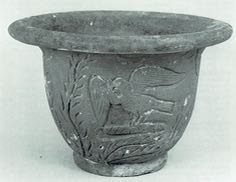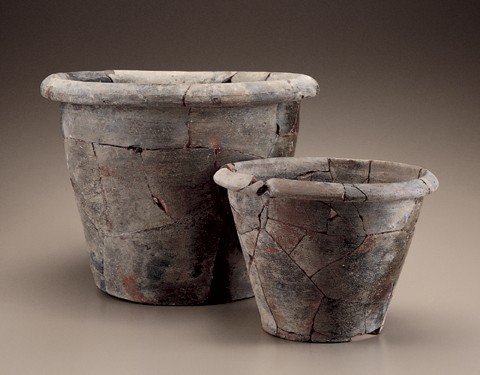
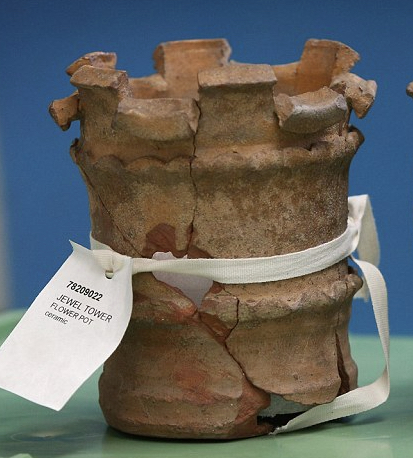
Pots from Williamsburg plus a castellated urn from Westminster now in the Wrest Park store.
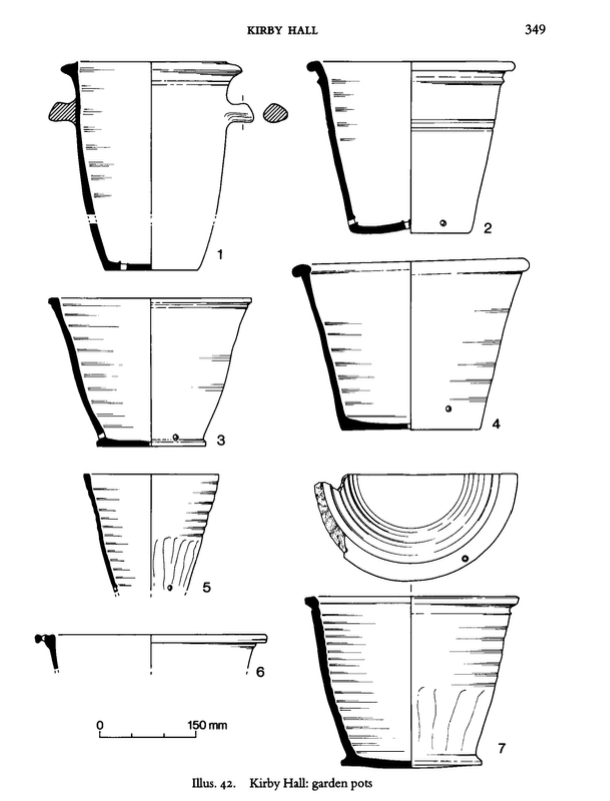
Illustrations of the pots from Kirby
If archaeology
lets us down can art help? Well the first thing so say is that there
are a variety of illustrations showing gardeners at work with pots and
urns to hand. A charming picture by David Teniel the Younger
from 1644 shows a gardener carrying a small potted tree and making use
of the moulding around the rim of the pot to get a good grip. It is
clear that plants were frequently moved around gardens of the period to
make best advantage of different flowering periods as well as enabling
tender specimens to be given additional winter protection. The 1682
image of arranging pot plants in a 'farm garden' from 'Georgica
Curiosa' by
Wolf Helmhardt von Hohberg shows a set of lion masked pots with a
variety of plants potted up and ready to be positioned on balustrades
or pillars.
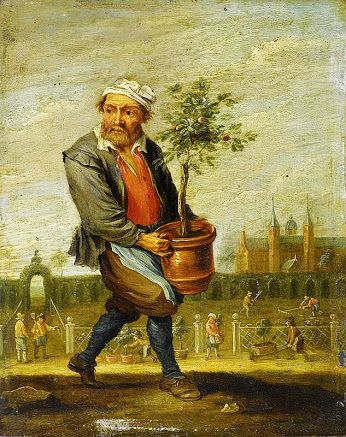
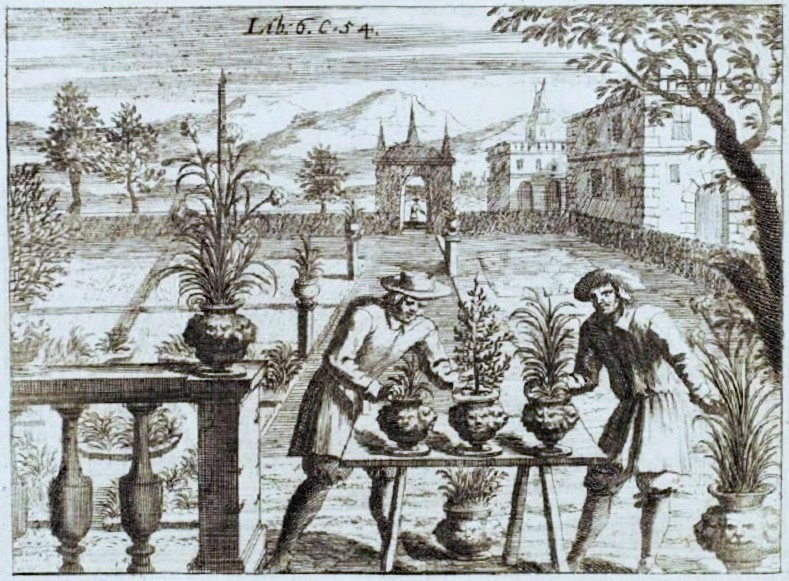
Gardeners and their pots: Teniel and Hohberg.
There are also
countless ( well I haven't counted them ) examples of genre paintings
generally of urns filled with flowers and often from Holland
which show a multiplicity of pot forms although it has to be said some
of them smack of the fantastical. The Spanish artist of the period
Thomas Hiepes was also prolific in his depiction of assorted urns.
Pieter Boel's wonderful painting of birds gathered round a fountain,
yours for only £32,500, reminds us that wooden tubs were often used in
gardens of the period both for planting and transplantation whilst the
decorative urn to the right may be an example of the stone mason's art.
The fountain with its octagonal surround is particularly evocative
given recent finds at Hanwell.
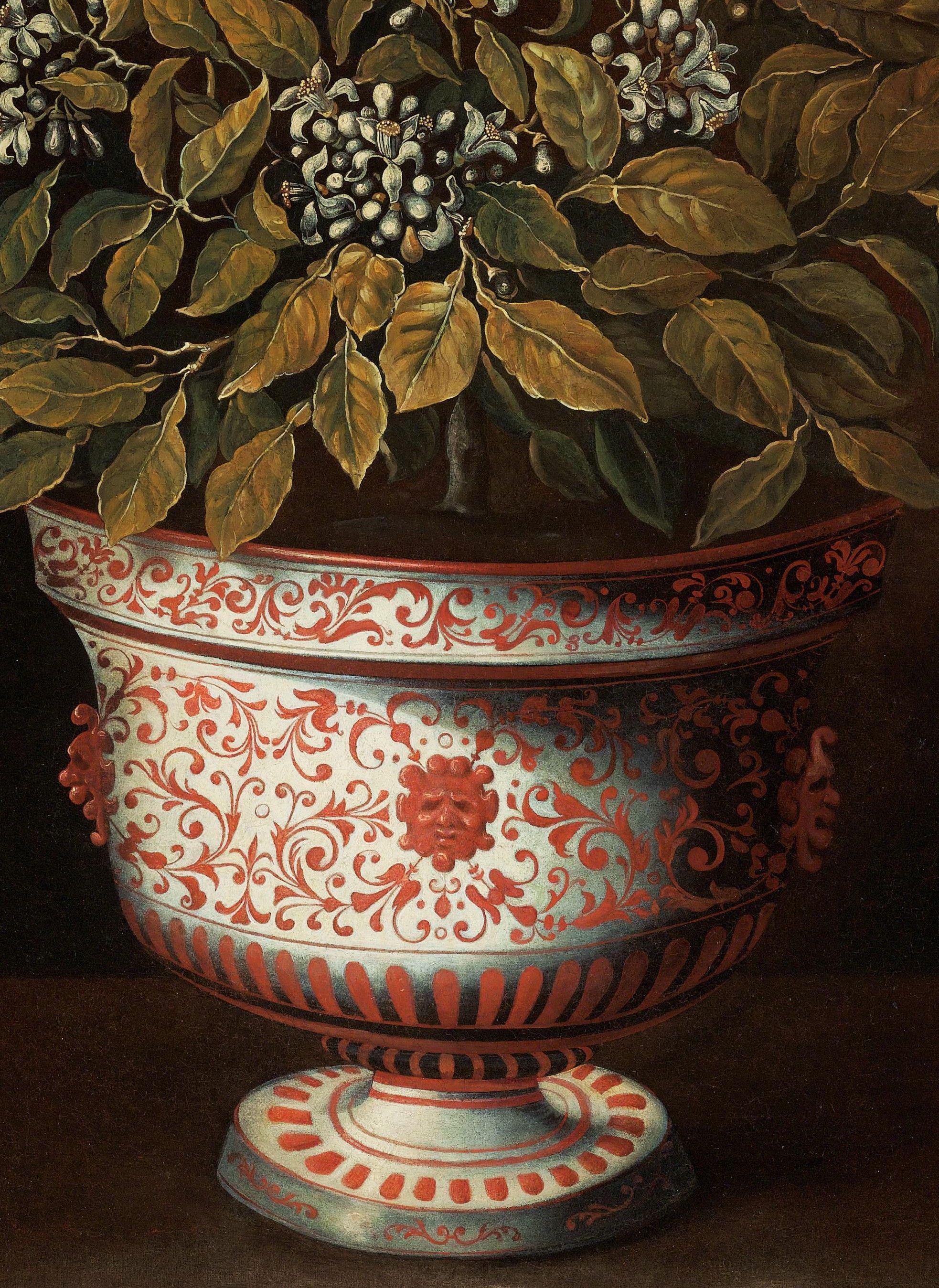

Thomas Hiepes... his urns, no idea what they are made of.
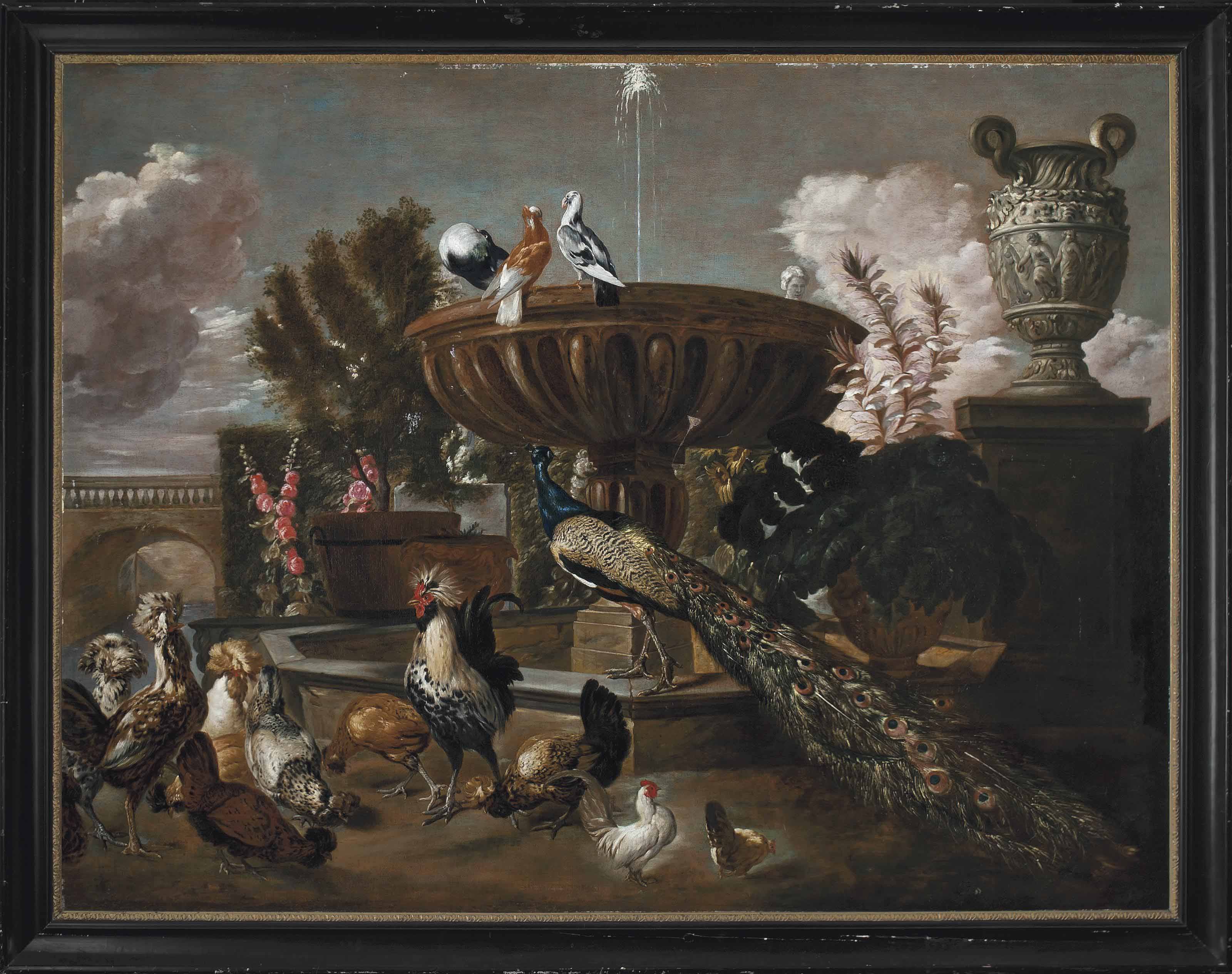
Pieter Boel's bird bath... alright maybe it's a bit grander than that.
When you scan the many contemporary illustrations of
seventeenth-century gardens pots are not as frequently depicted as you
might expect. Sometimes the scale may be too small to make it
worthwhile drawing them in or perhaps as movable elements of a garden
design they were not shown as permanent features within the garden. The famous image of John
Rose, the King's Gardener, presenting Charles II with a pineapple,
arguably the first grown in England, has a nice collection of
terra-cotta pots around a small pool with a good sized urn behind the
king but my favourite depiction by far is of the garden at Pierrepont
House, Nottingham with no fewer than 57 urns bordering the terraces
around a sunken garden. The suggestion usually made is that they are of
painted lead although I guess painted terra-cotta is a cheaper option.
It just gives you a feel for the look of these vessels as distributed
round the perimeter of the octagonal island at Hanwell.
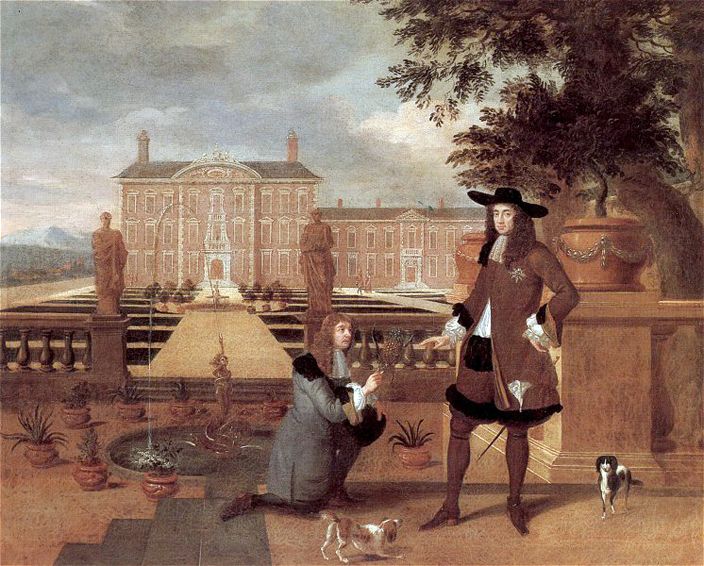
King, gardener, pineapple and dogs.
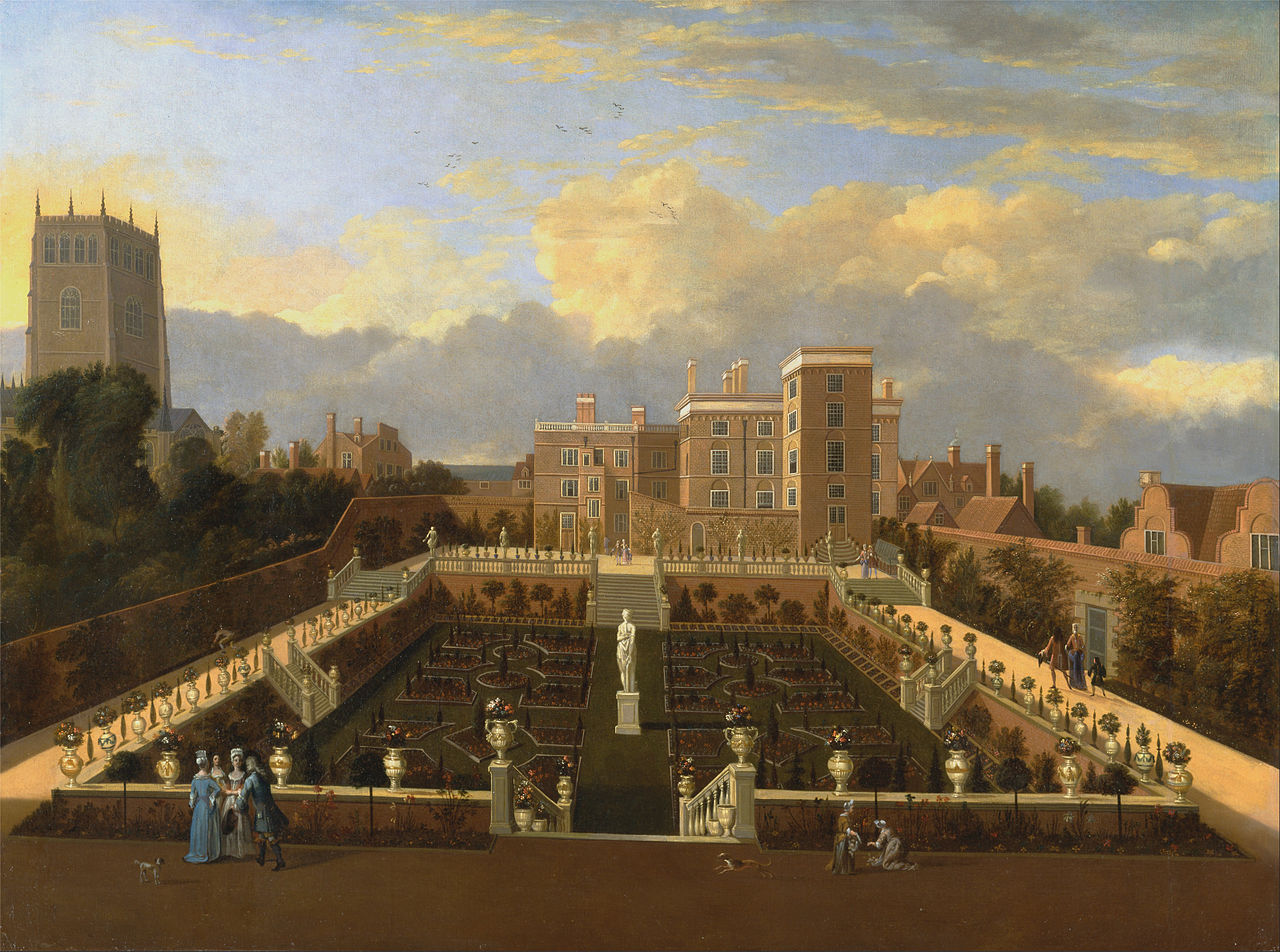
Now this is the kind of garden I'd like please, Pierrepont House around 1705.
